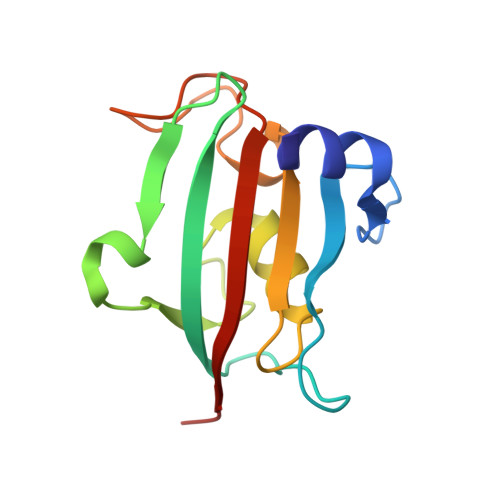Increasing the efficiency of ligands for FK506-binding protein 51 by conformational control.
Wang, Y., Kirschner, A., Fabian, A.K., Gopalakrishnan, R., Kress, C., Hoogeland, B., Koch, U., Kozany, C., Bracher, A., Hausch, F.(2013) J Med Chem 56: 3922-3935
- PubMed: 23647266
- DOI: https://doi.org/10.1021/jm400087k
- Primary Citation of Related Structures:
4JFI, 4JFJ, 4JFK, 4JFL, 4JFM - PubMed Abstract:
The design of efficient ligands remains a key challenge in drug discovery. In the quest for lead-like ligands for the FK506-binding protein 51 (FKBP51), we designed two new classes of bicyclic sulfonamides to probe the contribution of conformational energy in these ligands. The [4.3.1] scaffold had consistently higher affinity compared to the [3.3.1] or monocyclic scaffolds, which could be attributed to better preorganization of two key recognition motifs. Surprisingly, the binding of the rigid [4.3.1] scaffold was enthalpy-driven and entropically disfavored compared to the flexible analogues. Cocrystal structures at atomic resolution revealed that the sulfonamide nitrogen in the bicyclic scaffolds can accept an unusual hydrogen bond from Tyr(113) that mimics the putative FKBP transition state. This resulted in the first lead-like, functionally active ligand for FKBP51. Our work exemplifies how atom-efficient ligands can be achieved by careful conformational control even in very open and thus difficult binding sites such as FKBP51.
- AG Chemical Genomics, Max Planck Institute of Psychiatry , Kraepelinstraße 2, 80804 Munich, Germany.
Organizational Affiliation:

















